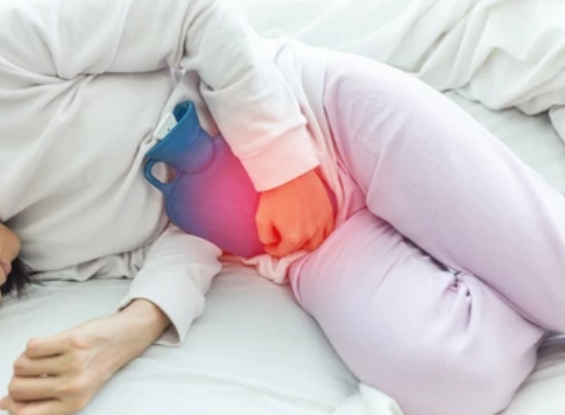Best Antibiotics for Cystitis
.png?v=1665762900388)

Related products
What’s covered?

Urinary tract infection is standard, with more than 10 million doctor visits yearly. Approximately 44% of people worldwide are expected to suffer from UTIs. This infection can occur in any part of your urinary system. It can affect the bladder, urine, kidneys, and urinary tract. Bladder infection is a type of urinary tract infection that occurs within the bladder. It is known as cystitis. Complex cystitis has underlying conditions, resulting in higher risks of therapy failure. Symptoms may arise after seven days of treatment, including diabetes, renal problems, functional abnormalities of the urinary tract, renal transplantations, indwelling catheter stents, and immunosuppression.
Urinary tract infections occur when bacteria from the skin or rectum enter the urethra and infect the urinary tract. They can be classified into four categories.
-
Uncomplicated urinary tract infection. The urinary tract is both physiologically and structurally normal. An uncomplicated UTI may be defined as the absence of an associated disorder known to impair the host defence mechanism.
-
Complicated urinary tract infection. Complicated UTIs occur when the urinary tract is abnormal, either by a ureteric obstruction, vesicoureteric reflux, or renal calculi.
-
Isolated urinary tract infection. This first UTI episode affects 25-40% of young females. It also refers to the episodes that are six months apart.
-
Unresolved urinary tract infection. Antibiotic resistance causes the therapy to fail. This can also happen when two different bacteria cause the condition.
Symptoms of urinary tract infections
UTI may be the culprit if you experience frequent pain in the toilet accompanied by burning urine. Below are the symptoms associated with urinary tract infections.
-
Burning pain when urinating
-
Frequent urination
-
Feeling of having to urinate despite having an empty bladder
-
Bloody and (or) smelly urine
-
The pressure of cramping in the groin or lower abdomen
Symptoms of cystitis are most likely similar to those mentioned above, other than being more common in women than men and specifically in the lower urinary tract.
Causes and risk factors of urinary tract infections
Cystitis and other types of UTIs are usually caused by bacterial infection. The most common causative agent for this infection is the Escherichia coli bacteria, responsible for about 70% of uncomplicated urinary tract infections that occur globally. Other responsible pathogens include Staphylococcus saprophyticus, S. aureus, Proteus mirabilis, Klebsiella pneumonia, and Pseudomonas aeruginosa. Once the urethra introduces these bacteria into the urinary tract, cystitis or bladder infection can occur. Women have shorter ureters and thus have a higher risk of infection. Other risk factors of UTI are menopause and reduced level of oestrogen.

Pregnant women
Pregnancy brings changes to a woman's body. Some of these changes increase the risk of developing infectious diseases such as urinary tract infections. The baby's growth in the womb causes increased pressure on the bladder, reducing the urine flow, and leading to infection. A pregnant woman experiencing symptoms of urinary tract infection is at risk of high blood pressure. At the same time, the baby is at risk of being born early and unusually smaller. Hence, a midwife or doctor should be immediately consulted when having any UTI symptoms during pregnancy to avoid complications affecting both the woman and the baby.
Best antibiotics for cystitis treatment
Urinary tract infections, when left unchecked, can result in more severe conditions such as kidney infections. Thus, it is crucial to seek medical attention when a person shows UTI symptoms. One way to treat urinary tract infections, both complicated and uncomplicated, is through antibiotic treatment, with complicated urinary tract infections requiring a longer course of treatment. Such treatment focuses on eliminating the infection of the urinary tract. OTC drugs such as Orlistat and Pyridium (phenazopyridine) can relieve painful bladder and urethra aches. Phenazopyridine is only taken 48 hours before a blood test as it could affect clothing and contact lenses. If contact lens problems occur, the person is advised not to wear contact lenses while using phenazopyridine.
Other treatment options involve cephalexin, cefaclor, and sulfamethofenoxazoline. Other antimicrobial therapies are oral fluoroquinolones such as ciprofloxacin, levofloxacin, norfloxacin, and ofloxacin. Similarly, antibiotics are the first line of treatment for bacteria-induced cystitis. For non-infectious cystitis, avoiding irritant products can help ease the symptoms and drink lots of liquids.
People with uncomplicated UTIs usually start treatment without diagnostic tests, but you can also take a urine sample for testing. The physician usually performs urinalysis and urine culture to diagnose symptoms of the infection. Urinalysis examines the urine sample for red blood cells, white blood cells, and bacteria. In contrast, urine culture determines the type of bacteria in the urine sample.
What about antimicrobial resistance?
Antimicrobial resistance occurs when pathogens change over time and no longer respond to drugs. It complicates the treatment of infections, which may result in the spread of the disease, severe illness, and death. Antibiotics thus become ineffective. This has been observed globally; there are high rates of resistance against antibiotics used in treating common bacterial infections such as diarrhoea, sexually transmitted infections, sepsis, and urinary tract infections. Ciprofloxacin and fluoroquinolone resistance are a few examples of antibiotics with recorded resistance.
As preventive measures against the spread of antibiotic resistance, a person is advised to use antibiotics only when prescribed by a health professional and to always take the complete prescription even after feeling better. It is also helpful not to use leftover antibiotics and share antibiotics with others.
Alternatives
Some people utilize cranberry juice as a treatment for urinary tract infections. Some researchers believe cranberries have anti-infectious effects, although this and its associated risks are still subject to further studies. Proven to be safe for consumption, drinking cranberry juice is known to help keep a person's weight down and reduce the chances of a digestive problem.
Drinking plenty of water can dilute urine and flush out Escherichia coli and other bacteria in the urinary tract. Aside from cranberry juice, other home remedies believed to be effective treatment options for UTIs include pineapple, apple cider vinegar, lemon juice and sugar, ginger tea, and coconut oil.
Common side effects of antibiotic use
Happening in around one in 10 people, the most common side effects of antibiotics are felt by the digestive system, including vomiting, nausea, diarrhoea, abdominal pain, loss of appetite, bloating and indigestion. These are usually mild and pass once the course of treatment is done. Allergic reactions to antibiotics can also happen, especially penicillin and cephalosporins. Around one in 15 people are reported to experience skin rashes, wheezing, coughing, and (or) tight throat that may cause breathing difficulties. You may take antihistamines to relieve these common symptoms of allergic reactions.
Meanwhile, a life-threatening allergic reaction to antibiotics, known as anaphylaxis, can occur in rare cases. The person may feel lightheaded or fainting, have difficulty breathing, wheeze, have clammy skin, become confused, and (or) lose consciousness. It would help if you immediately made an emergency once a person experiences anaphylaxis.
Despite the side mentioned above effects of antibiotics, it is essential to note that the advantage outweighs the side effects. Side effects rarely occur, while the chances of relieving the symptoms of infectious diseases are high when antibiotics are appropriately administered.
Recurrent urinary tract infections
A recurrent UTI refers to two or more infections in six months or three or more urinary tract infections within 12 months. Risk factors for recurrent cystitis are sexual intercourse, use of contraceptives such as spermicide and diaphragm, maternal history of UTIs, recent antimicrobial use, and a new sex partner in the past 12 months for premenopausal women. Postmenopausal women or older women can experience recurrent urinary tract infections if they have UTI before menopause, any cystocele, and postvoid residual volume. UTI in adult patients can also become recurrent if the person has a history of urogynecology surgery, urinary incontinence, and (or) reduced urine flow.
Complicated urinary tract infections, diabetes mellitus, neurological conditions, spinal cord injuries, indwelling catheters, urinary incontinence, renal stones, and cystocele contribute to recurrent infections. Symptoms of recurrent UTIs can be alleviated by antibiotics, drinking a lot of water, urinating after sexual intercourse, trying natural remedies such as cranberry juice, and avoiding foods that induce bladder pain, such as caffeine, alcohol, and spicy foods.
Preventing urinary tract infections
-
Drinking a lot of water
-
Maintaining personal and genital hygiene
-
Opting for other birth controls instead of spermicide or diaphragm
-
Not controlling the urge to urinate
-
Urinating after sex
Final words
Our health is our wealth. Awareness is crucial for every woman when it comes to health.
To learn more about cystitis, read our information page here.
To learn more about cystitis and other types of urinary tract infections and their treatment options, click here.




















 Rated Excellent by 26,523+ Reviews
Rated Excellent by 26,523+ Reviews